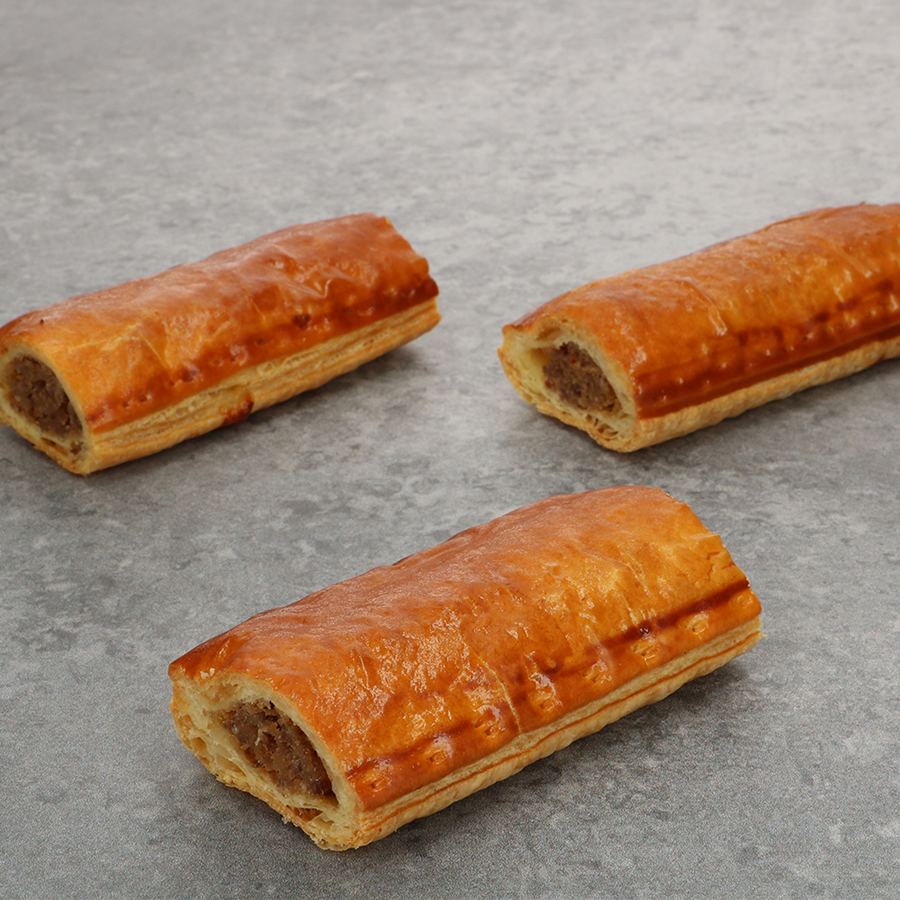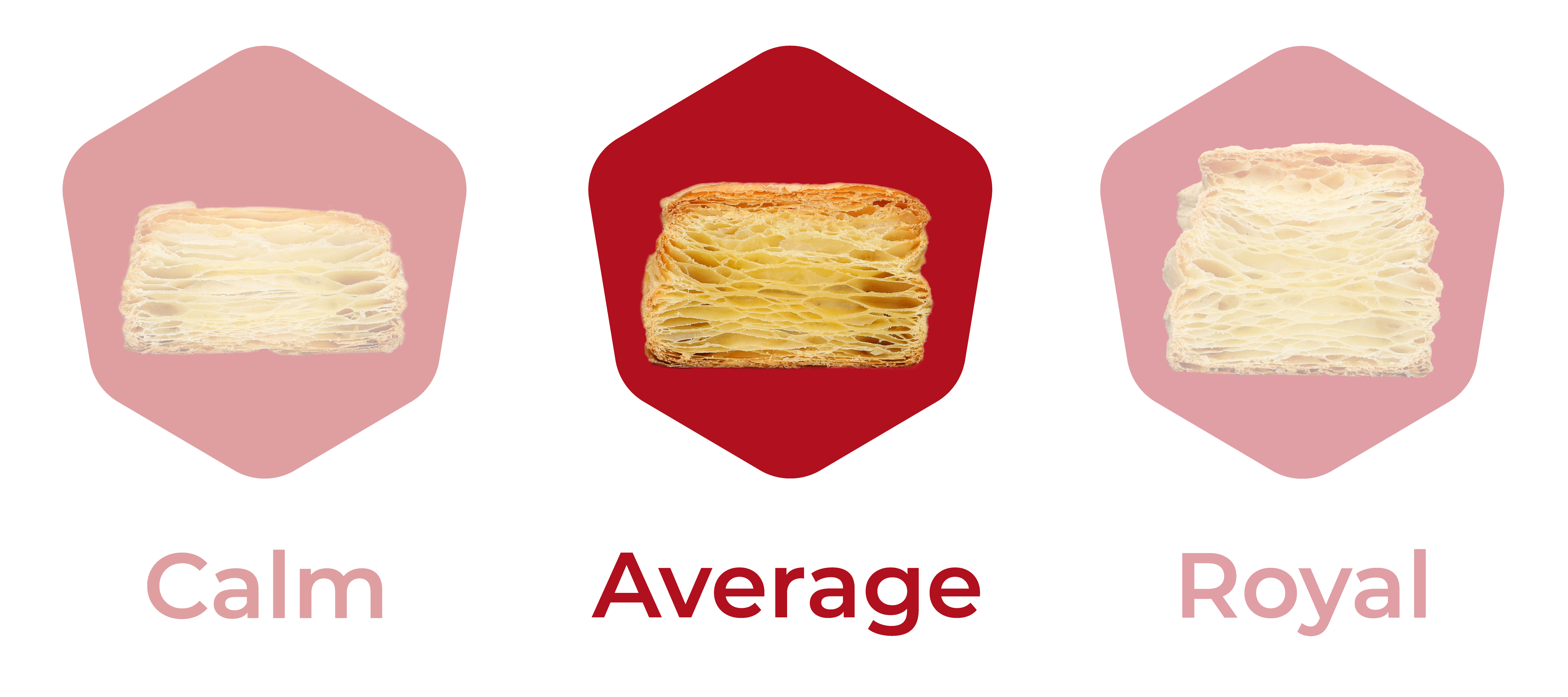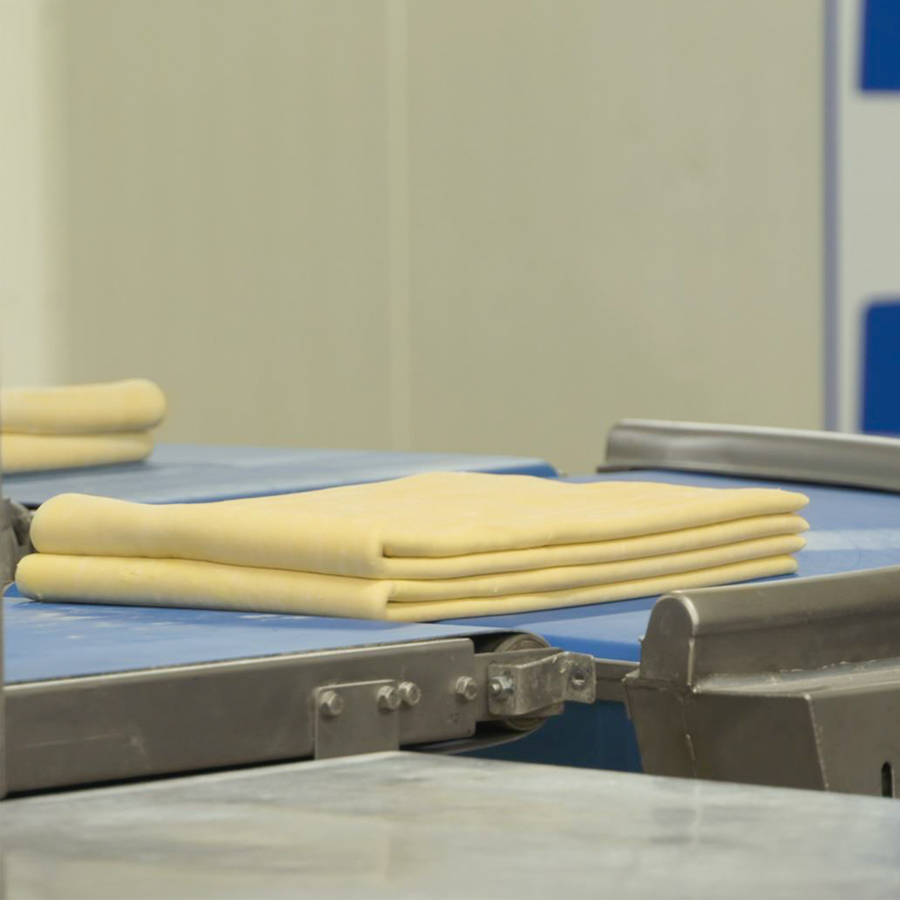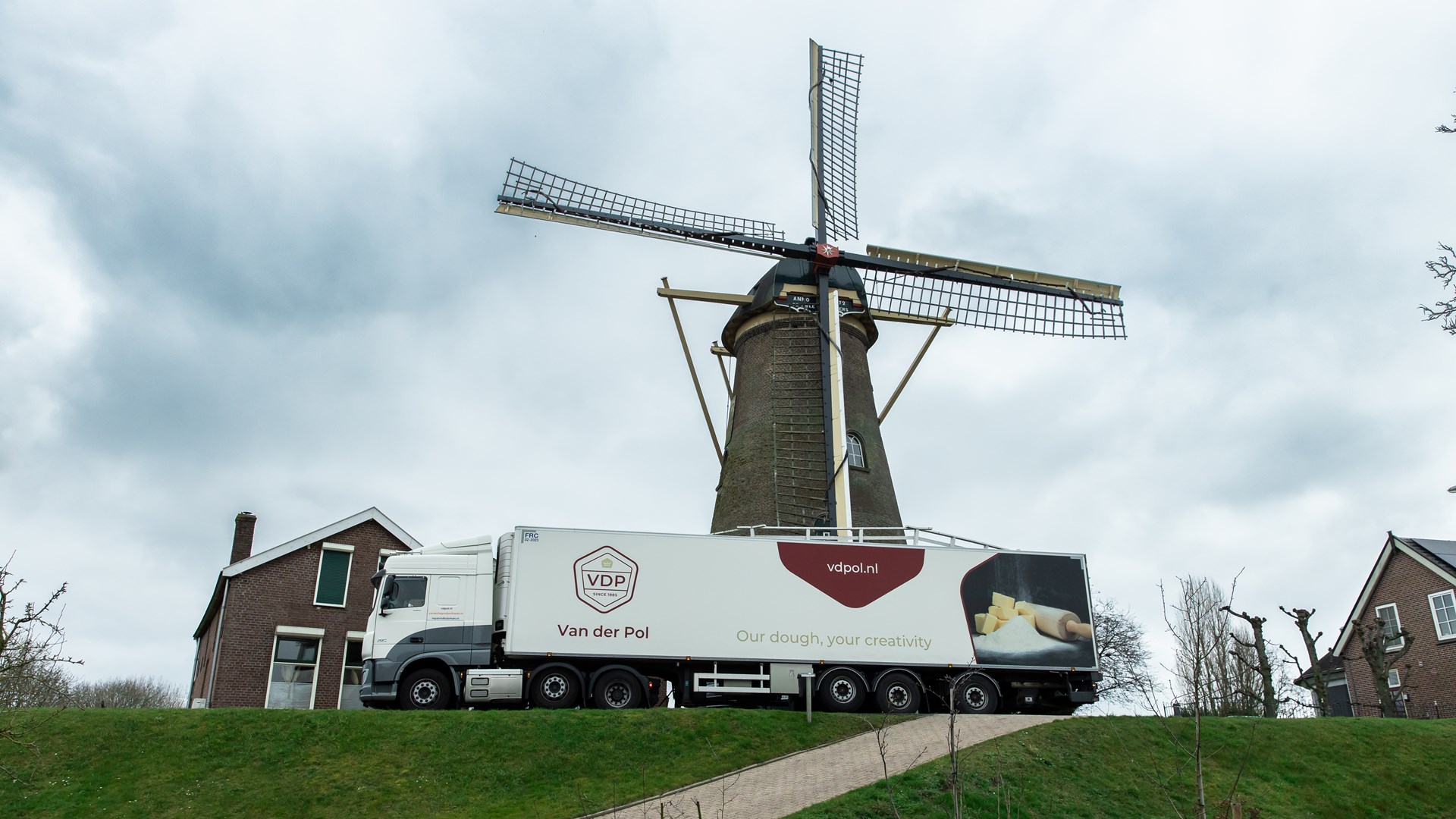Preparation
Make a choux batter by bringing milk to the boil and then adding the butter. Take the mix from the heat and stir in the flour. Simmer the batter over a medium heat. Stir the egg gradually through the batter until you get the desired stiffness.
Mix the breadcrumbs, milk, sun-dried tomatoes and the herbs together. Then mix this into the choux batter and finally add the mince. By using the choux batter in your mince mix, the mince rises nicely while baking.
Roll out the puff pastry to 1.5 mm thickness. The best way to make the sausage rolls is on a trespa worktop, rather than directly on the counter. Mark out 7 centimetre wide strips on the puff pastry. Distribute the mince mix down the strips. Then dampen lightly using a spray. Roll out the puff pastry to 1.5 mm thickness and place this on the strips of mince. Use your hands between the strips to remove any air between the two layers of puff pastry. Press down on the puff pastry with a ruler, for example, which fits exactly between the strips. After this, prick little holes in the edges of the dough. Then use a dough cutter to cut the strips at 7 centimetres and cut 12 centimetre long rolls. Brush two layers of egg yolk over the sausage rolls. If you use egg yolk alone instead of a whole egg, you get a lovely even gloss.





